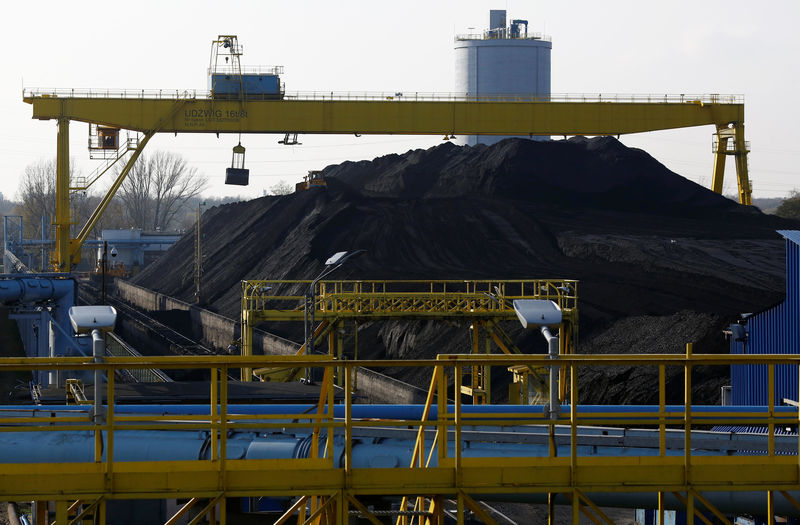By Sudarshan Varadhan
SINGAPORE (Reuters) – Asia has boosted clean electricity production and cut its share of fossil fuels faster than North America and Europe from 2015, data shows. This underlines Asian countries’ resistance to a Western push to stifle private financing for coal-fired energy.
There is broad agreement that increasing clean energy, such as wind and solar power, is critical to reducing carbon emissions to fight climate change. On Saturday, 118 governments, led by the US and the European Union, pledged at the UN climate summit to triple the world’s renewable energy capacity by 2030.
However, China and India did not support the COP28 pledge because it came with reducing the use of fossil fuels, which they see as essential to reliably meet rapidly rising energy demand.
By strengthening their vision even with coal, higher financing costs and weaker access to funds, Asia surpassed Europe and North America in the fight against climate change with major action since the 2015 Paris climate agreement, an analysis of the findings found data by Reuters.
Asia increased clean energy, including hydropower and nuclear, as a share of total energy production by about 8 percentage points to 32% between 2015 and 2022, according to a study of data from energy think tank Ember.
By comparison, the share of clean energy in the energy mix in Europe increased by more than 4 percentage points to 55%, while in North America it increased by more than 6 percentage points to 46%.
“There can be no pressure on India to reduce emissions,” Indian Minister of Energy and Renewable Energy RK Singh said on November 30.
Remove ads
.
Asia has reduced the share of fossil fuels in energy generation by 8 percentage points to 68% in 2022 compared to 2015, reducing the use of gas and coal more than in Europe and North America.
Over the same period, Europe’s dependence on fossil fuels has fallen by 4 percentage points, while in North America it has fallen by 6 percentage points.
“The data shows that the West is not moving fast enough in scaling up renewables and storage,” said Hogeveen Rutter, who works with private companies on behalf of the International Solar Alliance (ISA).
Rutter said delays in the approval of renewables, storage projects and grid connections in Europe and the US have hampered the growth of clean energy use in the West.
ASIAN EMISSIONS ARE RISING
To be sure, fast-growing Asia, home to half the world’s population, is responsible for three-fifths of global emissions from energy generation, including from sectors that export goods and services to the West.
And India and China continue to build new coal-fired power stations to meet rapidly growing demand for electricity.
That means emissions from power generation in Asia will continue to rise, after rising nearly 4% annually since the Paris agreement, while demand for electricity has soared while emissions in Europe and North America have declined, according to reports. is evident from Ember’s data.
However, Asian governments have argued that the world’s richest countries should help poorer countries cut emissions, citing rich countries’ higher per capita emissions and their continued use of fossil fuels over the past century.
This year, Western countries expressed reluctance to finance the early retirement of polluting plants in Indonesia, the world’s seventh-largest coal-fired power plant, despite pledges to help the country decarbonize.
Remove ads
.
“Asian countries with access to finance have been able to develop much faster, while other parts of Asia need more concessionality to catch up. This illustrates the need for the West to help with concessional financing for storage to transition away from coal,” says ISA’s Rutter. said.
Financing shortages and high tariffs for renewable energy have hampered Indonesia’s move away from coal, while access to funds has enabled a rapid expansion of green energy in China, analysts say.
A report published Monday estimates that developing countries will need $2.4 trillion a year in investments to limit emissions.
WEST GOES TO GAS
Some Western countries are trying to restrict coal financing, calling it the “biggest threat” to climate goals. Despite challenges, Asia, along with Europe and North America, has reduced coal’s share of electricity consumption, albeit at a slower pace.
However, both Europe and North America are increasingly turning to coal – often described as a transition fuel – to offset some of the decline in coal-fired power generation, while gas makes up an increasingly smaller share of power generation in Asia.
The share of gas increased by 3 percentage points to 26% of European energy generation in 2022 compared to 2015, with North America increasing the share of gas-fired energy by 6 percentage points to 36%, despite weak energy demand growth.
Cuts in nuclear power have slowed Europe and North America’s struggle to reduce emissions, although nuclear’s share of their energy mix is still well above Asia’s.
“The progress the West has made is reducing the use of dirty coal and using relatively less polluting gas,” said Ghee Peh, an analyst at the Institute for Energy Economics and Financial Analysis.
Remove ads
.
India, the world’s second-largest coal user, has advocated phasing out all fossil fuels rather than setting aside coal, and plans to oppose the plan to ban private financing for coal. It wants rich countries to invest more in energy storage to support renewable energy sources.
“We cannot phase out fossil fuels unless we have nuclear power or until storage becomes viable,” Singh said.


